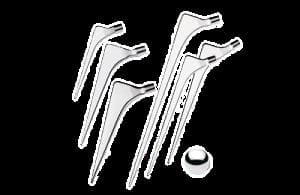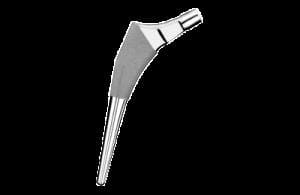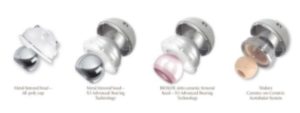Our goal is to give you a well functioning hip replacement that will last as long as possible. How long an implant lasts depends on how active you are, and what type of implant has been used.
There are a number of variables in the choice of your hip replacement. There are a multitude of manufacturers with different types of implants available. Your surgeon will have a preference on the type of implant that they regularly use and most surgeons will vary implants on the type of patient undergoing surgery (e.g. bone quality, level of function).
Generally there are 2 ways in which the implant can fix to the bone. They can be ‘glued’ in using bone cement (cemented implant), or the implant can be coated with a material that bonds with the bone (uncemented implant). Commonly a surgeon will cement one component of the implant (most commonly the stem that fixes in the femur) and used an uncemented implant for the other component (cup that fixes into the pelvis); this is called a hybrid hip replacement.
Image showing a cemented stem:

Image showing an uncemented implant – Note the coating that bonds onto the bone:


Uncemented implants are favourable where the bone quality is better (in some younger patients), cemented implants are used where the bone quality is poorer.
The other key variable is the bearing surface. Just like in an engine bearing, a hip replacement produces wear when a patient walks. Using a material that produces less debris from movement will wear less.
Apart from the Metal on Metal (MOM) hip replacements that are now rarely used, the common bearing surfaces are Metal on plastic (MOP), Ceramic on Plastic (COP), and Ceramic on Ceramic (COC). In each case the plastic used is a high-grade polyethylene that is very durable, and it is the debris from this plastic that causes an implant to loosen.


MOP MOP COP COC
Images showing the different types of bearing surfaces.
Your surgeon will know which bearing surface is right for you. There are many factors in deciding this, and you should ask questions if you have any uncertainties.
Regarding the manufacturer of implant: we only use implants with ODEP ratings of at least 10*A (or heading towards that figure) when we perform a hip replacement. This means that we use the implants that are least likely to fail, with the longest potential for survival.